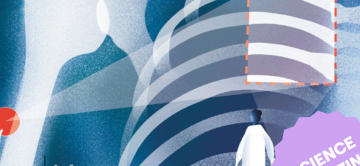Medical technology is advancing faster than ever, as evidenced by the lightning speed of Covid-19 vaccine development. But little is known about how health authorities should design long-term budgets for expensive new cures: high prices can both incentivize research into life-saving treatments and place a huge burden on public resources. Analyzing such trade-offs is a central focus of TSE Health Center’s ‘Pharmaceutical industry and regulation’ program, inspiring a new paper by Pierre Dubois and Thierry Magnac that focuses on the case of the Hepatitis C virus in France. Their analysis demonstrates the benefits of forward-looking allocation of funds compared to fixed annual budgets.
Why do pharmaceutical innovations pose a challenge for health authorities?
When new drugs have the potential to cure chronic conditions but the cost of treating a large number of patients is prohibitively high, it can be particularly difficult for policymakers to set long-term budgets. Rather than relying solely on production costs or expected demand in price negotiations, healthcare authorities often use a value-based system to tie the price of drugs to their effectiveness in treating specific conditions. While a myopic focus on immediate health needs can undermine long-term objectives, value-based pricing that justifies high prices for life-saving cures can challenge the short-term ‘affordability’ of health budgets.
As new treatments can radically alter the trade-offs involved, long-run optimal planning could generate benefits for all parties. However, most European countries make only annual agreements with pharmaceutical firms that impose no long-run commitment.
In the future, health authorities are likely to come under increasing pressure to plan ahead as advances in gene and cell therapies promise drastic improvements in the treatment of otherwise incurable conditions. For communicable diseases, the optimal long-term allocation of the authority’s initial budget depends on the decreasing efficiency of treatment with the number of patients but also on the rate of transmission and infection.
Why do efforts to control Hepatitis C offer an instructive case study?
 In our paper, we use a Susceptibles-Infected-Recovered model similar to those used to understand the spread and control of other infectious diseases, such as Covid-19. This allows us to analyze the optimal sequence of expenses for healthcare authorities on a new curative drug treatment. We use data on Hepatitis C infections in France to calibrate our model before simulating optimal policies.
In our paper, we use a Susceptibles-Infected-Recovered model similar to those used to understand the spread and control of other infectious diseases, such as Covid-19. This allows us to analyze the optimal sequence of expenses for healthcare authorities on a new curative drug treatment. We use data on Hepatitis C infections in France to calibrate our model before simulating optimal policies.
Hepatitis C is a major source of liver disease that affects millions worldwide. Its treatment underwent a major upheaval when decisive curative drugs were introduced in 2014. As these drugs are expensive, policymakers faced a familiar trade-off between spending big now or waiting for competing treatments to arrive. For instance, Joe Biden has proposed a $5 billion plan to rid the US of the virus by 2030 but he may struggle to convince cost-cutters in Congress.
Without such generous funding, health authorities usually respond by prioritizing high-risk patients and delaying treatment for others. In France, access to the new Hepatitis C drugs was restricted to a selection of patients depending on virus genotypes, disease stages and comorbidities. Other researchers have shown how in-class competition had a positive impact on the uptake and adoption of these antiviral drugs in Europe.
Hepatitis C infections had previously built up in France due to sharing of needles by drug addicts and unsafe blood transfusions. The prevalence of asymptomatic cases makes the virus hard to track but these causes of infection were at least partly under control by 2010. Accordingly, our model allows for undetected cases; it also assumes a low transmission rate so that the disease will eventually be eradicated and that seems true in Europe at least.
What are the key contributions of your paper?
We find that spending more today implies less infection tomorrow, but also less effective cures and other dynamic externalities. Holding the intertemporal budget constant, we show that it is optimal for health authorities to reduce infection in the short run by front-loading their spending. Unfortunately, this does not accelerate full eradication of the disease as it continues to be fueled in the medium run by undetected cases.
 However, this result is calibrated to the characteristics of Hepatitis C in France and is difficult to prove in a formal model as it depends on which trade-off we focus on. There is clearly much more to be done to understand optimal policy rules. For instance, our research highlights the difficulty of setting long-term budgets if health authorities are free to renegotiate future resources in the event of a rebound in infections. Results should be also sensitive to the evolution of trade-offs over time, especially when changing prices and future innovations are likely to encourage health authorities to wait until more cost-efficient treatments become available.
However, this result is calibrated to the characteristics of Hepatitis C in France and is difficult to prove in a formal model as it depends on which trade-off we focus on. There is clearly much more to be done to understand optimal policy rules. For instance, our research highlights the difficulty of setting long-term budgets if health authorities are free to renegotiate future resources in the event of a rebound in infections. Results should be also sensitive to the evolution of trade-offs over time, especially when changing prices and future innovations are likely to encourage health authorities to wait until more cost-efficient treatments become available.
FURTHER READING
‘Optimal Intertemporal Curative Drug Expenses: The Case of Hepatitis C in France’ and other publications by Pierre and Thierry are available to read on their TSE webpages. For another study of the benefits of long-run healthcare planning, see ‘The Hammer and the Dance: Equilibrium and optimal policy during a pandemic crisis’ by the TSE Macroeconomics Group (Assenza et al., 2020).
Article published in TSE Reflect, March 2023





